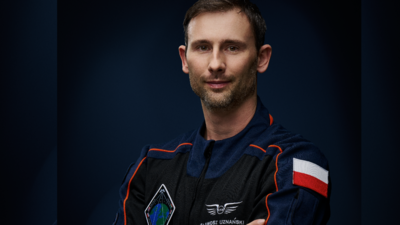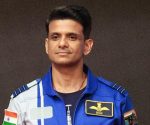CERN to space, I’ve always chased big questions: Sławosz Uznański – The Times of India

From being a particle physicist with a deep-rooted career at CERN (European Organization for Nuclear Research) to preparing for a journey to the International Space Station (ISS), Polish engineer and ESA astronaut Sławosz Uznański-Wiśniewski embodies the fusion of science and exploration. Now set to fly on the Axiom-4 mission, he brings experience from CERN to the challenges of human spaceflight. As Poland’s first representative on the ISS, much like India’s Shubhanshu Shukla, his mission is not just scientific—it’s symbolic. In an exclusive interview to TOI, he reflects on the intersections between particle physics and space exploration, the demands of astronaut training, and more.Excerpts:How do you see particle physics and space exploration intersecting in the future?With my experience at CERN, I’ve witnessed how particle physics can drive space exploration. Both fields address profound questions: what is the universe made of, how did it begin, and what is its fate? A key example is CERN’s Alpha Magnetic Spectrometer (AMS) aboard the ISS, a major experiment probing cosmic origins. Technologies developed for particle accelerators—especially in radiation physics—are critical for astronaut safety on long-duration missions. Materials tested under extreme conditions at CERN are improving spacecraft durability, while autonomous systems developed for complex experiments are revolutionising remote mission operations. These advances also benefit Earth—enhancing medical treatments and sustainable technology. It’s a thrilling time as innovation flows between science and space.What excites you most about being in ESA’s astronaut reserve & how has it prepared you?The most exciting part is being at the cutting edge of space science, collaborating with brilliant minds across Europe. My engineering background, combined with training from ESA and scientific work at CERN, has prepared me well for the Ax-4 mission. Every element—from research to operations—has equipped me for human spaceflight. It’s a privilege to contribute to such a mission and help shape the future of exploration.How do you transition from remote Earth expeditions to challenges in space?Outdoor exploration has taught me resilience, adaptability, and preparation—skills vital for spaceflight. Whether mountaineering or conducting zero-gravity experiments, it’s about staying focused and solution-driven. The endurance built on Earth helps me embrace the demands of space. The drive behind my scientific and exploratory pursuits is the same: a passion for the unknown. I’ve always chased the big questions.What moment inspired your path toward the ISS?One pivotal moment was working at CERN on the LHC’s powering systems, and later, as an Engineer in Charge. Operating the world’s most complex scientific machine for a global community of researchers was profoundly motivating. Moving into space research and ISS collaboration felt like a natural next step. The Ax-4 mission is a continuation of that journey—using science to unlock universal mysteries and contribute to something larger than myself.How will your Ax-4 mission impact Poland’s role in space research?Poland is steadily gaining momentum in space research, and the Ax-4 mission is a milestone. It showcases our scientific potential and inspires investment in STEM. By conducting space-based studies, we highlight Poland’s contributions to international exploration. This mission isn’t just about science—it’s about inspiring future generations and positioning Poland as a serious space player. I’m proud to represent my country in its first mission to the ISS.
















